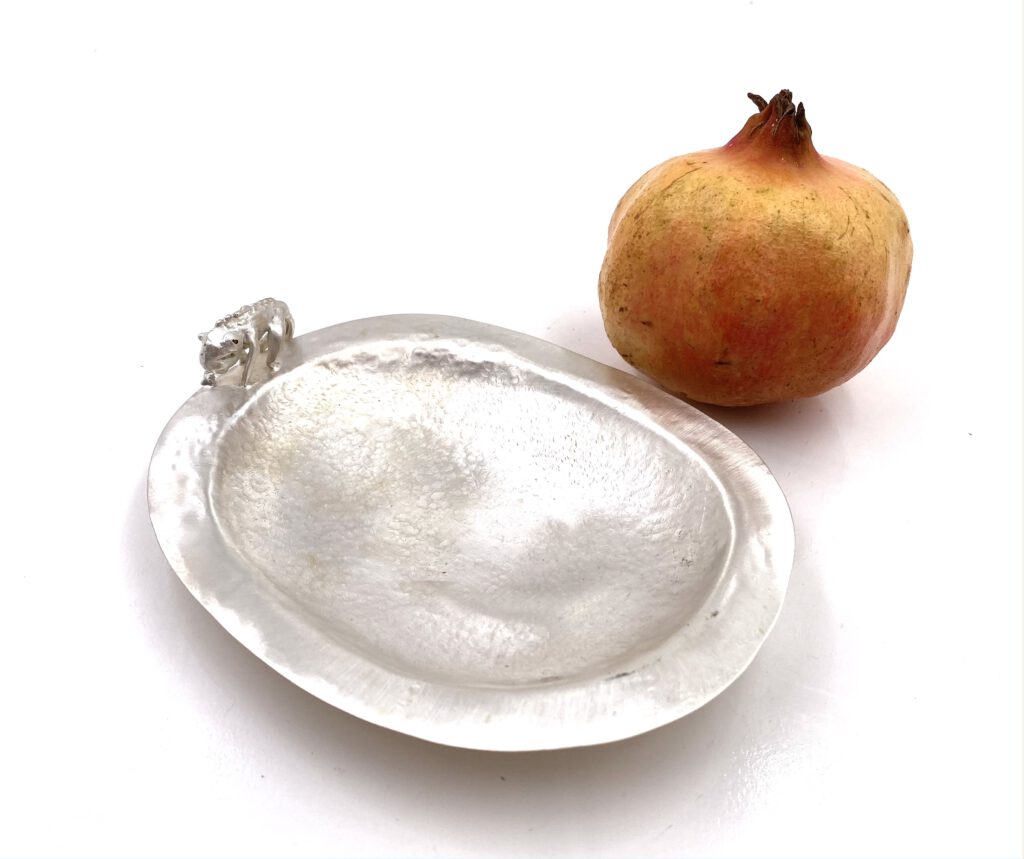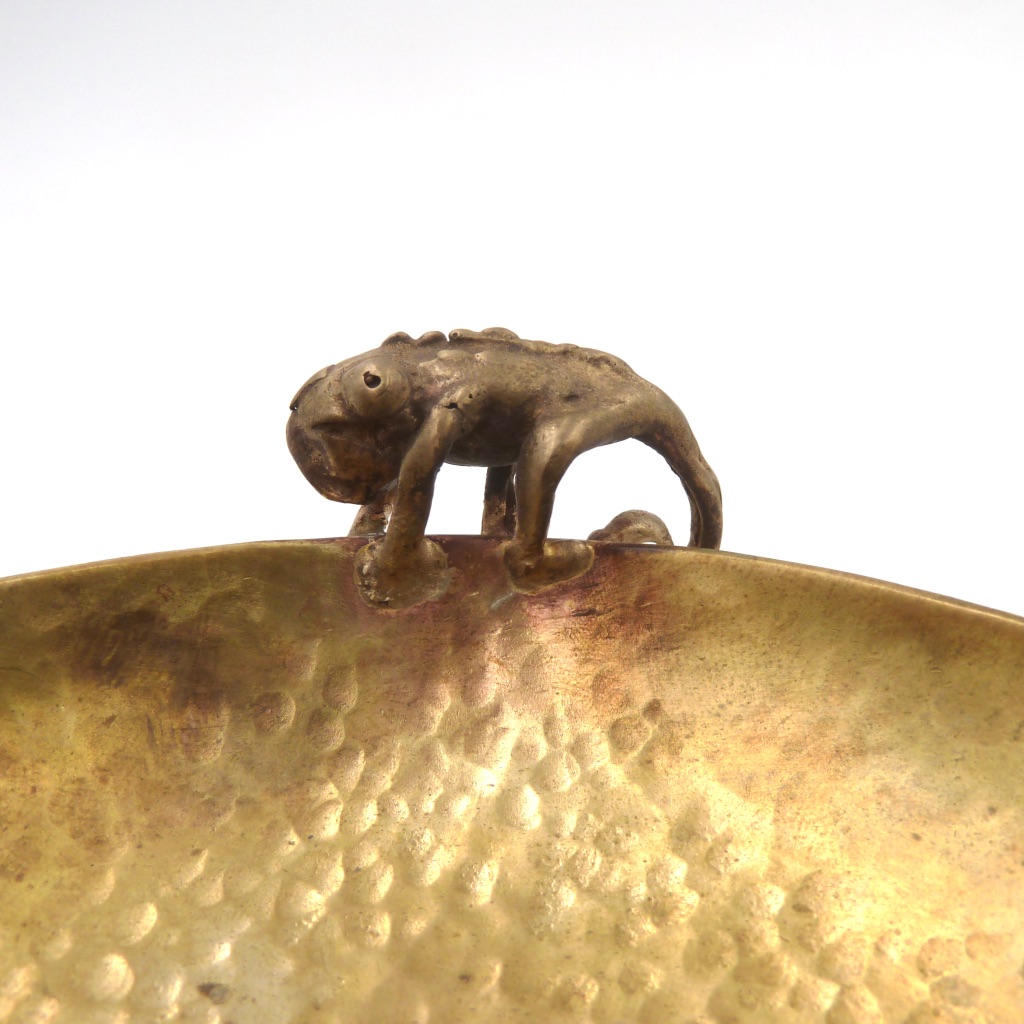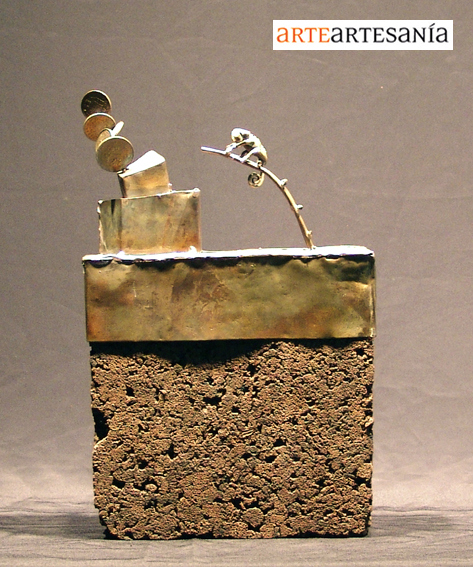
Carlos Tellechea Stories of a chameleon | Art in Arteartesania
For me the Chameleon means something like:
“Non-violent adaptation”
At one point when I was between Cercedilla and Segovia, in my early years in Spain, leaving aside the production of costume jewelery, which I did to sell in markets, I decided to make a small sculpture of a chameleon, with a hollow body, welding bronze cuts … .
Some time later I asked the “Loqui” (my founder of those times) to melt the original and thus I had the first 10 cast bronze chameleons …
And so, once the bronze chameleon was created, I built a landscape of metal cutouts for it as well, and this one, within the world of feminine ornamentation, which was my trade.
And the first Piece that was put together was a Choker. Then a bracelet that were run by the little chameleon
Understanding as Roberto Bolaño that contests can be an alternative to stick his head out for a craftsman from the provinces, I decided to present the Pieces to the Castilla y León Craft Design Contest
The Work was a Regional Prize. In a way, the chameleon remained, as a resource, as a talisman and finally as a characteristic signature of my works. Every year he cast about twenty pieces and made completely different series, Jewels, small desk sculptures, objects for personal use and other decorative items such as the bowls that appear in the photo above.
The chameleon transforms the piece in which it appears in a small story, the aesthetic is added to the narrative.
General information about Chameleons
Chameleons are a family, Chamaeleonidae, of small scaly sauropsids (reptiles). There are about 161 species of chameleons, most of them in Sub-Saharan Africa.
The term “chameleon” derives from the Latin chamaeleo, a loan from the Greek χαμαιλέων (khamailéōn), in turn composed of χαμαί (khamaí) “on land” and λέων (léōn) “lion”. The Greek word is a carbon copy of the Akkadian nēš qaqqari, “land lion.”
Some species of chameleon are capable of changing color, which is their most famous characteristic.
Contrary to what some believe, they are not colorless, nor do they change color only according to the environment; in reality, the change in its basic color more often expresses a physiological condition (related to temperature or the time of day) or a psychological condition (caused by the proximity of an eventual adversary or partner).
The color change also plays an important role in communication during chameleon fights: the colors indicate whether the opponent is scared or furious. Colors can vary from reddish to greenish.
Chameleons have specialized pigment cells in various layers of the dermis, under their transparent outer epidermis. The cells in the upper layer, called chromatophores, contain yellow and red pigments. Below that of the chromatophores is another layer whose pigment cells, the guanophores, contain a colorless crystalline substance, guanine. The guanophores reflect, among other things, the blue color of the incident light. When the upper layer with its chromatophores determines a yellow color, the blue light reflected by the guanophores is stained green (blue + yellow). Even lower down is a layer rich in melanophores, loaded with the dark pigment eumelanin that also stains human skin. These melanophores regulate brightness, that is, the amount of reflected light. All these pigment cells can regulate the distribution of the pigments they contain, expanding or contracting it, which in turn gives rise to the differences in brightness, hue and pattern that distinguish chameleons.
Throughout the West, the term “chameleon” is used in colloquial language as a synonym for a fickle person, who adapts his behavior and characteristics to circumstances. The term does not always have a negative connotation (of falsehood), and can also mean “flexibility”. It is also quite used to adjective good actors



